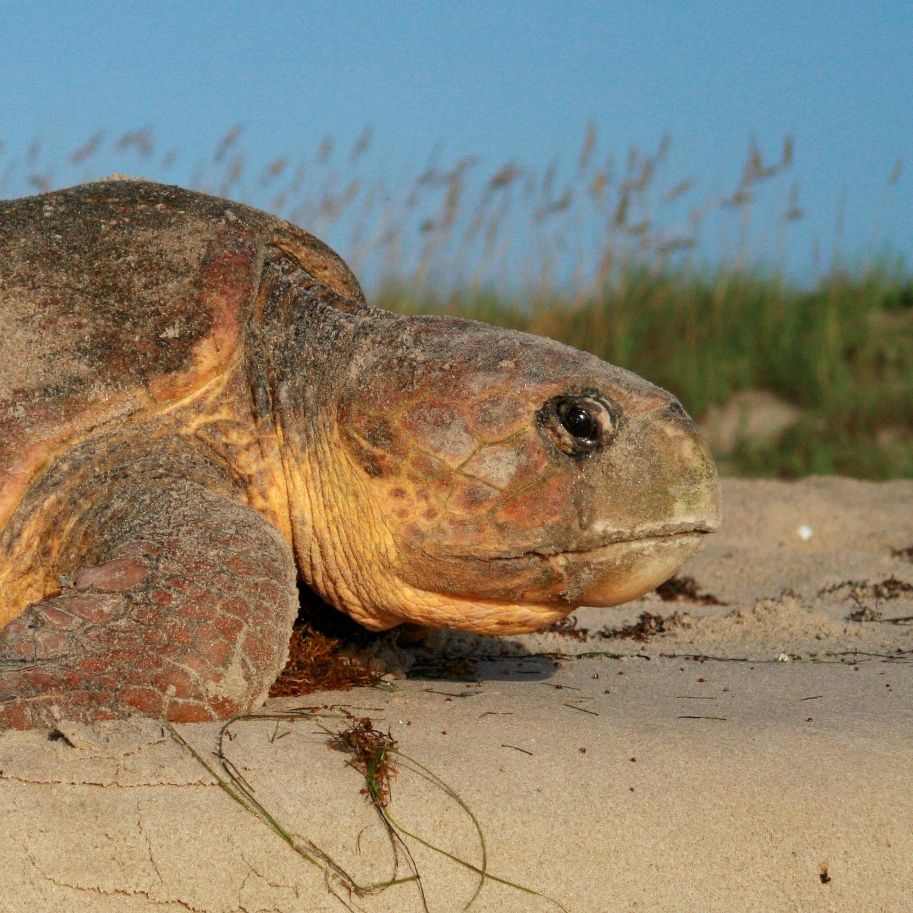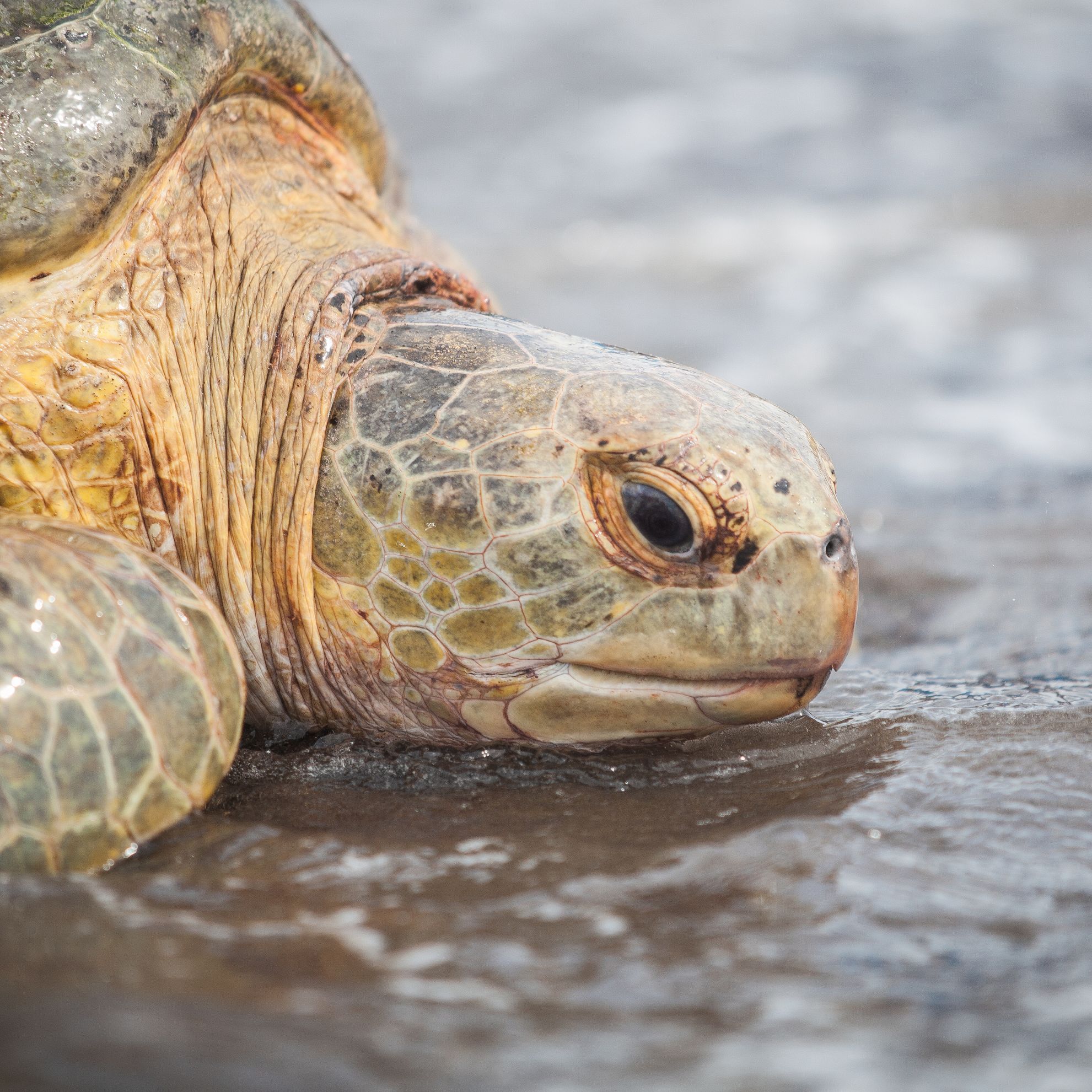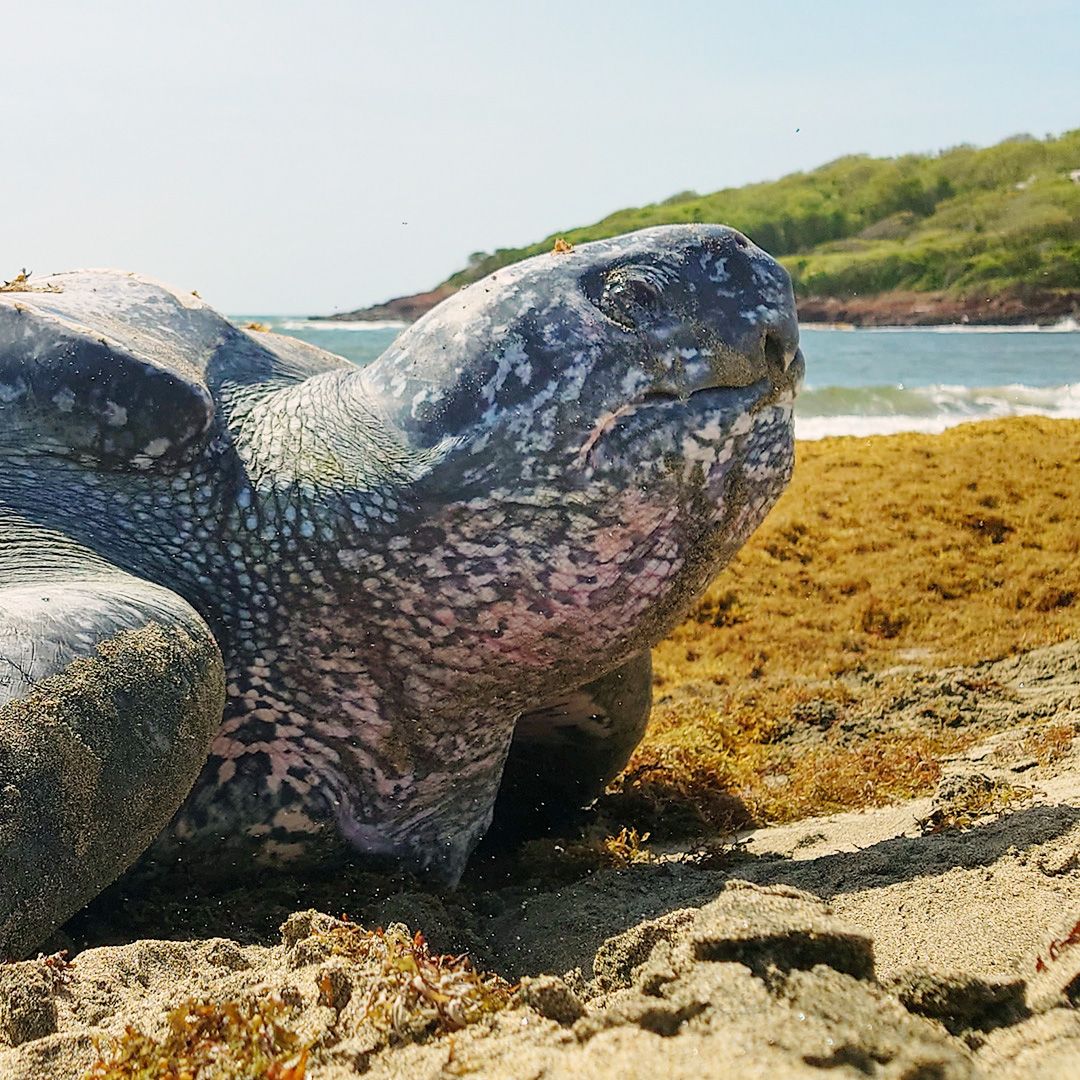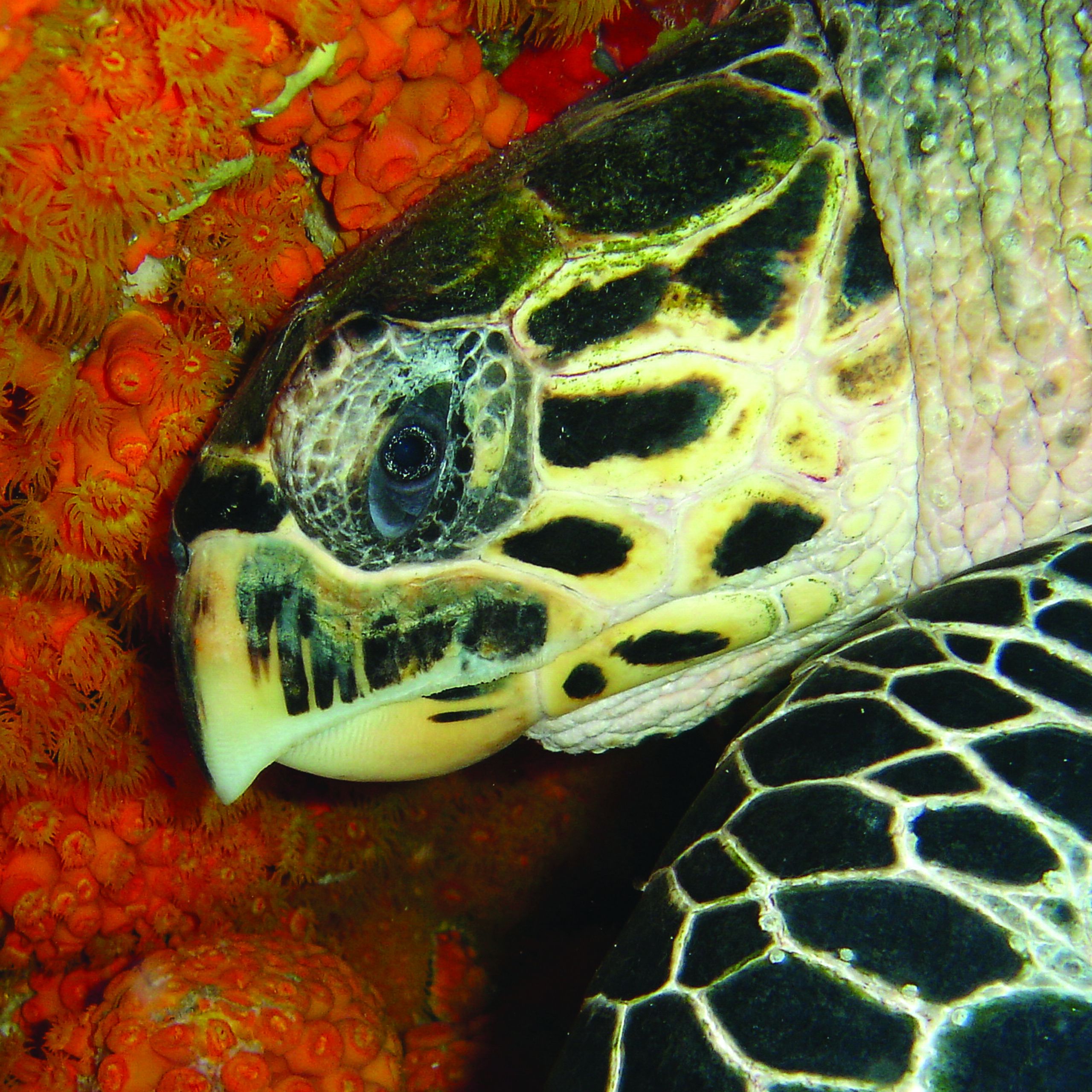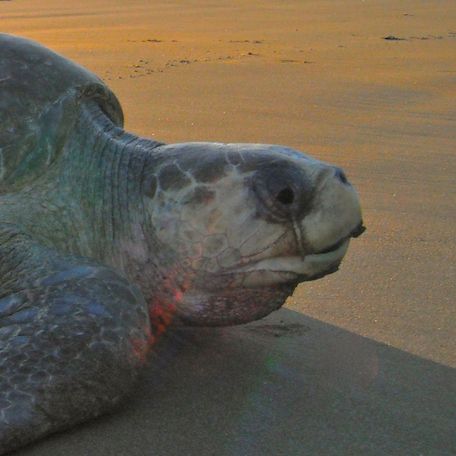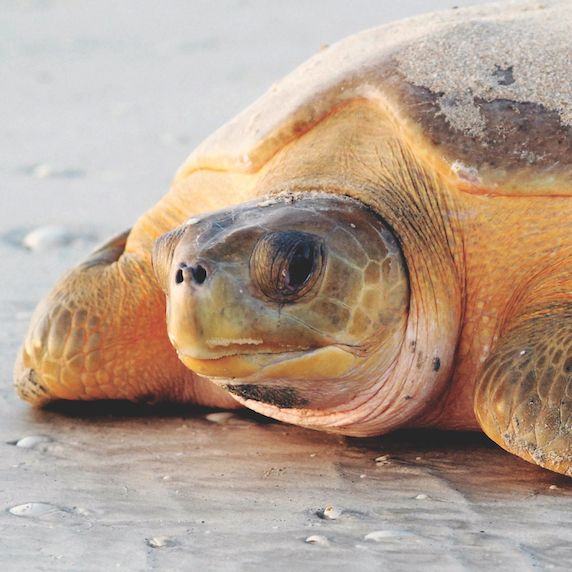Loggerhead
Scientific Name
Caretta caretta
Named for its exceptionally large head, the Loggerhead turtle prefers to feed in coastal bays and estuaries, as well as in the shallow water along the continental shelves of the Atlantic, Pacific and Indian Oceans. They are primarily carnivorous and feed mostly on shellfish that live on the bottom of the ocean. They eat horseshoe crabs, clams, mussels, and other invertebrates which their powerful jaw muscles help them to easily crush.
Loggerhead Turtles typically measure 2.5 to 3.5 feet in carapace length (80 to 110 cm) and weigh between 155 and 375 pounds (70 to 170 kg). Their heart-shaped carapace is bony without ridges and has large, non-overlapping, rough scutes (scales) present with five lateral scute and have reddish-brown with a yellowish-brown plastron. Their front flippers are short and thick with two claws, while the rear flippers can have two or three claws. Loggerhead hatchlings have a dark-brown carapace with flippers pale brown on margins. They nest at intervals of two to four years. They lay 3 to 6 nests per season, approximately 12 to 14 days apart, with an average 100 to 126 eggs in each nest that incubate for about 60 days.
The greatest threat to the species is the loss of their nesting habitat due to coastal development, predation of nests, and human disturbances (such as coastal lighting and housing developments) that cause disorientations during the emergence of hatchlings. Other major threats include incidental capture in longline fishing, shrimp trawling and pollution. Incidental capture in fisheries is thought to have played a significant role in the recent population declines observed for the loggerhead. They are currently listed as Threatened (likely to become endangered, in danger of extinction, within the foreseeable future) under the U.S. Federal Endangered Species Act. Internationally they are listed as Vulnerable (facing a high risk of extinction in the wild in the near future) by the International Union for Conservation of Nature and Natural Resources.
Where We Live
- Nearshore Hardbottom
- Lagoons and Estuaries
- Beach and Dunes
- Mangroves
- Coral Reefs
- Seagrass Beds
- Barrier Islands
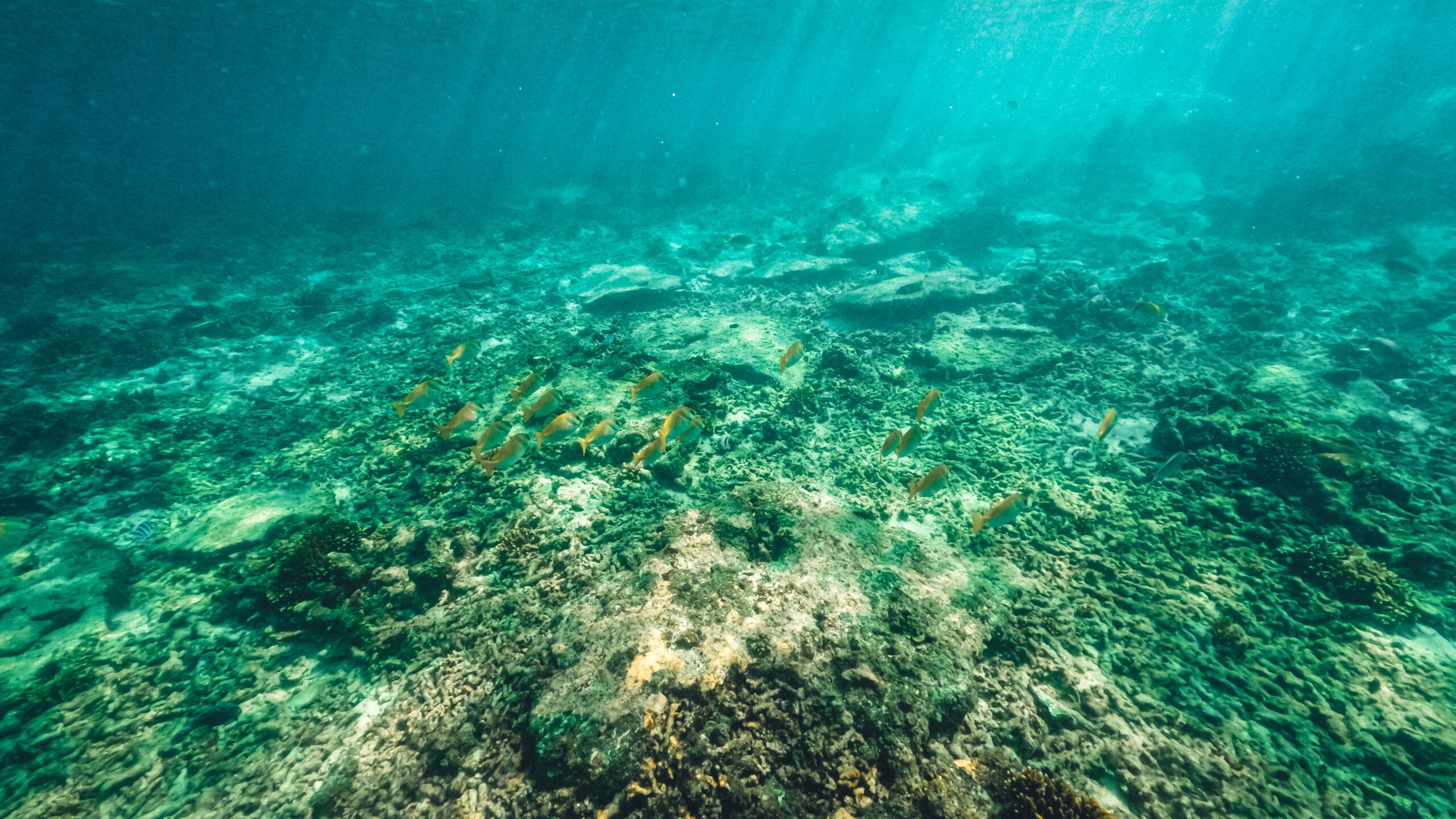
Nearshore Hardbottom
Nearshore hardbottom habitat are the primary natural reef structures at depth of less than 15 feet and is primarily made up of tube-building polychaete worms or coquina shells. Hardbottom reefs are often centrally located between mid-shelf reefs and barrier island estuarine habitats. The reefs provides habitat to more than 530 marine organisms, including juvenile snappers, grunts, groupers, wrasses, and sea turtles. These reefs help stabilize nearby beaches. Nearshore reefs reduce wave and current energy and protect against coastal erosion.
Unfortunately, beach renourishment projects, which involve dredging sand from offshore and pumping it onto the beach, impact nearshore habitats, as well as the green turtles that find food and shelter there. In particular, the artificially wide, man-made beaches bury large sections of nearshore reef and hardbottom habitats used by sea turtles and many other forms of marine life. The projects can also increase turbidity in the water, which affects the reef algae – a food source for juvenile green turtles.
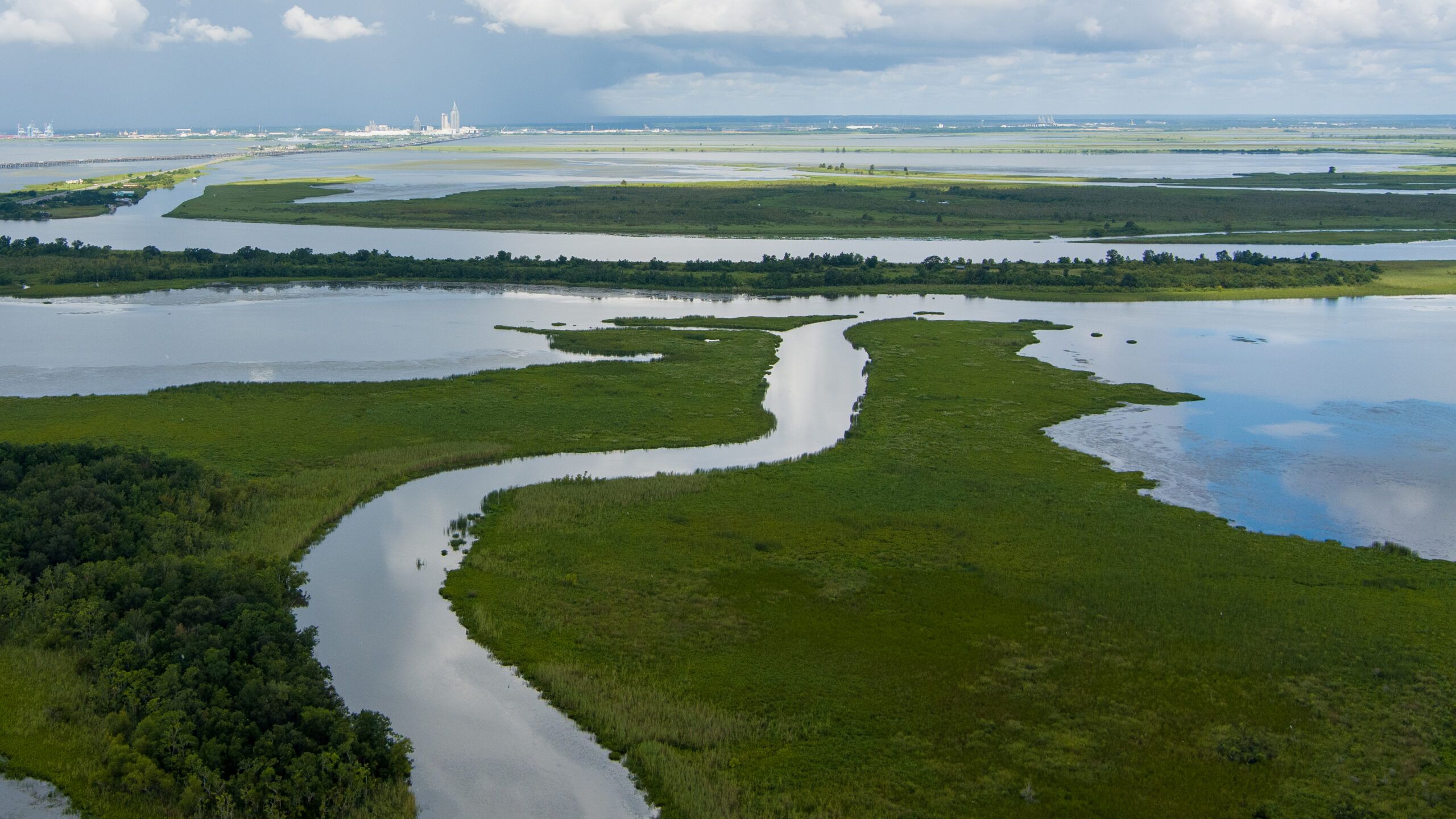
Lagoons and Estuaries
Estuaries and lagoons are areas where salt water oceans and fresh water rivers mix together, forming brackish water. Lagoons lie between barrier islands and the mainland, while estuaries are found directly on the coast and are open to the near shore area. Because lagoons receive some protection from a barrier island, they have less tidal flow and more standing water, while estuaries have strong tidal flows and little standing water. Lagoons and estuaries support a diversity of plants and wildlife.
Lagoons are an important feeding area for juvenile sea turtles, that mainly feed on the large seagrass beds in the lagoon. Unfortunately, marine pollution has caused the health of the lagoon to deteriorate, and wildlife and plant abundance has decreased.
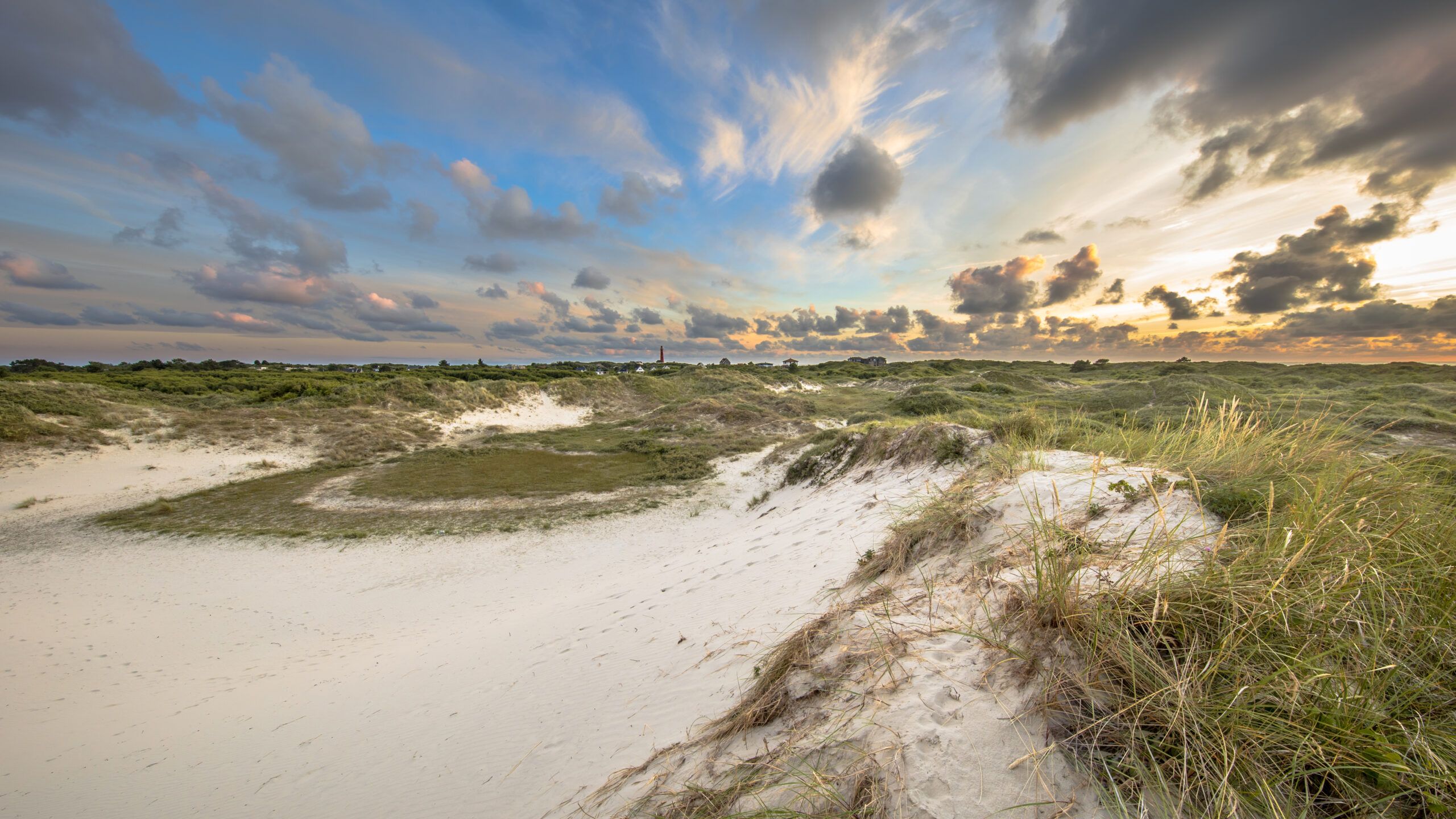
Beach and Dunes
A beach and dune ecosystem is a dynamic coastal habitat characterized by constantly shifting sands shaped by marine and terrestrial processes. Beaches and dune tend to be nutrient poor habitats where only specialized plants and animals can thrive. It’s home to many species of plants and animals, including shorebirds, sea turtles, invertebrates, and unique vegetation. Dune vegetation includes sea oats (a perennial grass that builds up dunes by trapping sand with its stems) and dune grasses (plants that can tolerate windy, salty conditions with little water). The beach and dune ecosystem is highly sensitive to changes in wave action, wind patterns, and sea level rise.
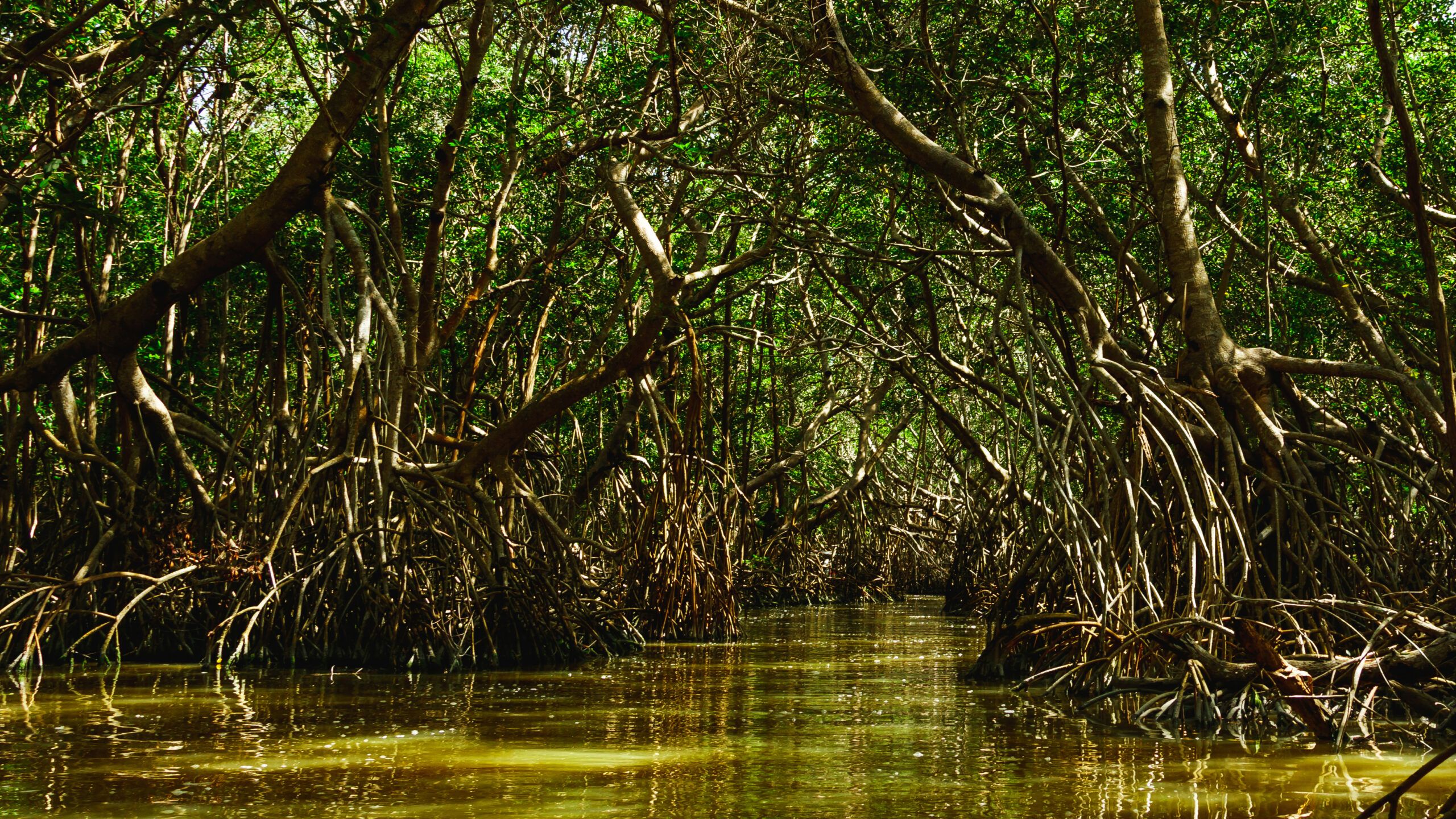
Mangroves
Mangroves receive an abundant supply of fresh water and perform important functions such as filtering out pollution, holding sediments, protecting the shoreline from erosion and providing habitat for a variety of animals.
The most biologically diverse of all the lagoon and estuary communities. They provide habitat for at hundreds of fish, reptile, amphibian, mammal and bird species. Commercial fishermen also depend on mangroves for the production of lobster, shrimp and snapper. Mangroves can be very susceptible to coastal development and pollution.
Mangroves are an important area for juvenile sea turtles, they often are found hiding and find food among the roots.
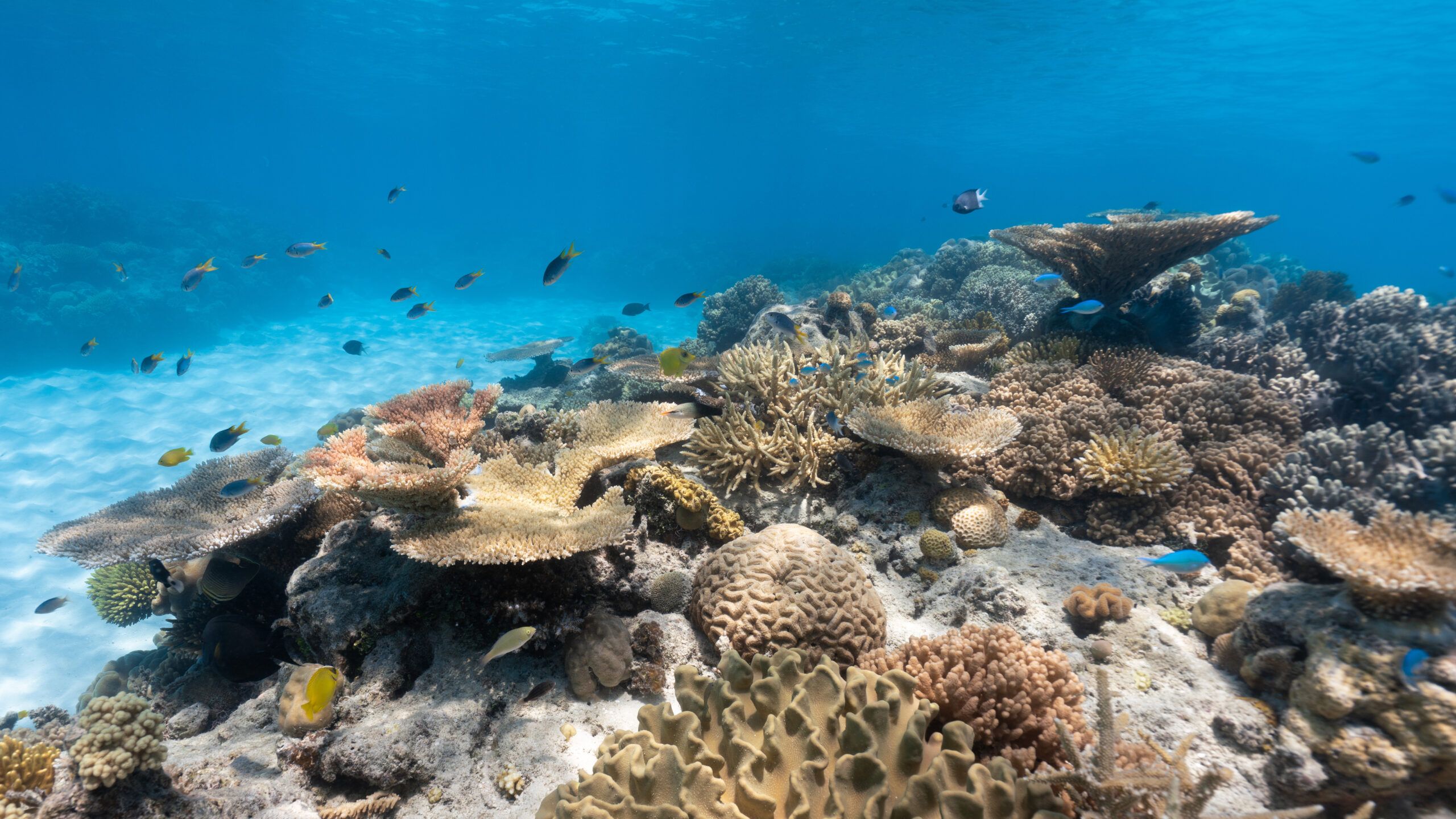
Coral Reefs
Numerous species of coral are found in worldwide. Each kind lives in a separate colony that is shaped differently from the others. The colonies take on the various hues of the algae that live within them – usually red, green, and brown.
Coral reefs are among the most biologically diverse ecosystems on earth. They are second only to tropical rain forests in the number of species they harbor and, indeed, are sometimes called “the rain forests of the sea.” Like their terrestrial counterparts, coral communities may contain valuable materials and medicines that may one day be useful to people. Coral reefs are home to many of the state’s most important fisheries resources, including spiny lobsters and groupers. Reefs also buffer coastal land from the damaging effects of storms and erosion and help to form the sandy beaches and quiet lagoons that are signatures of the state’s tourism industry.
Coral reefs today face an unintentional, but growing, threat from the very people who prize them most. Boaters frequently run aground or drop anchor on the coral heads, divers and snorkelers step on and bruise them, and pollution threatens to sully the clear waters that are vital to their survival.

Seagrass Beds
Seagrasses are flowering plants found in shallow coastal marine waters and are different than seaweed (algae). Algae obtains its nutrients directly from the water through diffusion, while seagrasses use their leaves and roots to obtain nutrients from sediment and water.
Seagrass beds are important feeding and breeding habitats for many marine species, including sea turtles. Unfortunately, seagrass beds have been on the decline since 1940 and more than one-third of the original seagrass around the state has been lost. Along Florida’s Gulf Coast, seagrass beds have declined 8% since 1969. Seagrasses are both an indicator of environmental health and an important breeding ground for the lower tier of the marine food chain.
Seagrass beds are incredibly important habitat for juvenile and adult fish and crabs and shrimp. They also tend to be relatively sensitive indicators of water quality, and in places where humans are affecting water quality, researchers can look at trends over time in seagrass abundance as a way to indicate whether humans are having more or less of an impact on water quality. In addition to pollution, seagrass beds are declining due to being damaged by boat propellers and anchors.
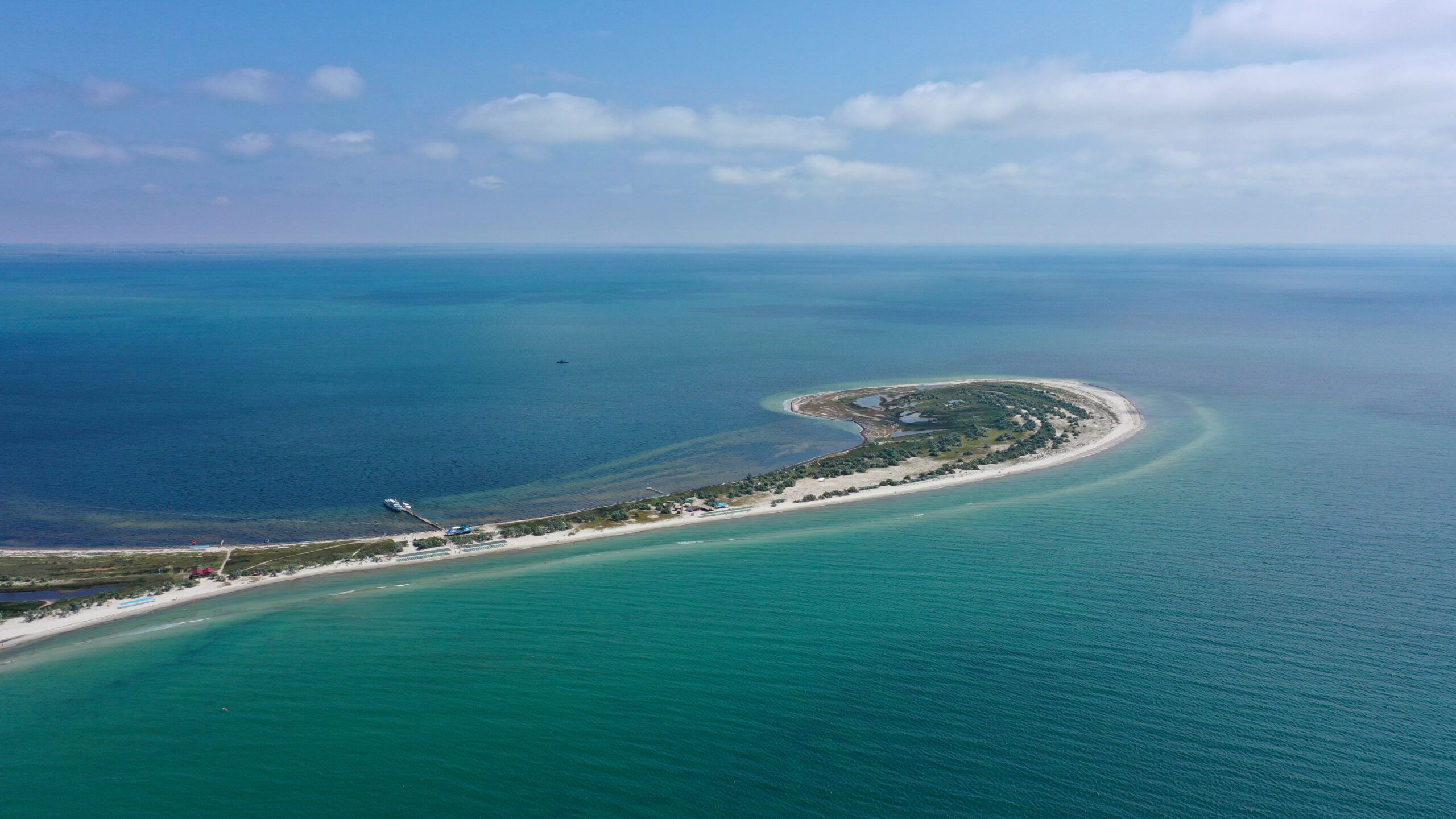
Barrier Islands
Barrier islands are naturally formed by shifting sands that build upon an existing sandbar to eventually form an island. The sand that has accumulated above the water surface becomes the home for the drifting seeds of beach plants. As the seeds grow and develop, their roots stabilize the soil, allowing the development of coastal strand and maritime hammock communities.
Barrier islands support a variety of plant and animal species that are either rare, threatened or endangered.
Barrier islands are greatly affected by the forces of wind and waves and are constantly moving towards or away from the mainland. Because barrier islands provide mainland protection from hurricanes and large storms by absorbing the impact of waves and storm water over flow, entire barrier islands can be severely reshaped or completely destroyed by a major storm.
Details
-
Size
3 feet
Typically 2.5 to 3.5 feet in carapace length (80 to 110 cm) -
Weight
260 lbs
Adults weigh between 155 and 400 pounds (70 to 181 kg) -
Range
World Wide
Their range extends from Atlantic to Newfoundland to Argentina. They can also be found in the Gulf of Mexico, Brazil, Japan, South Africa, and Australia -
Population
50 k
Population estimate is between 40,000 and 50,000 nesting females













